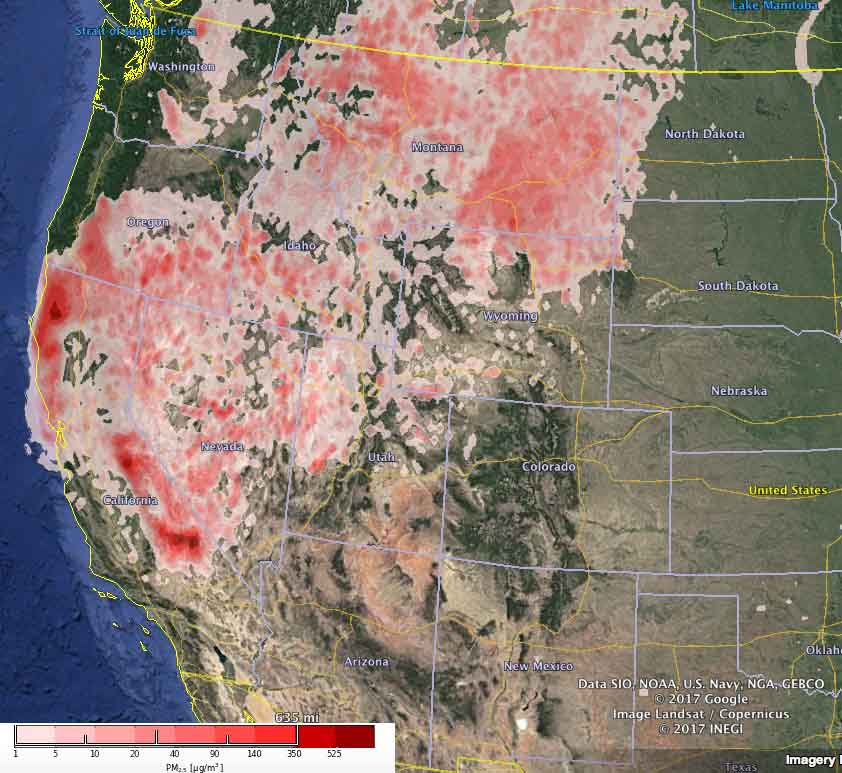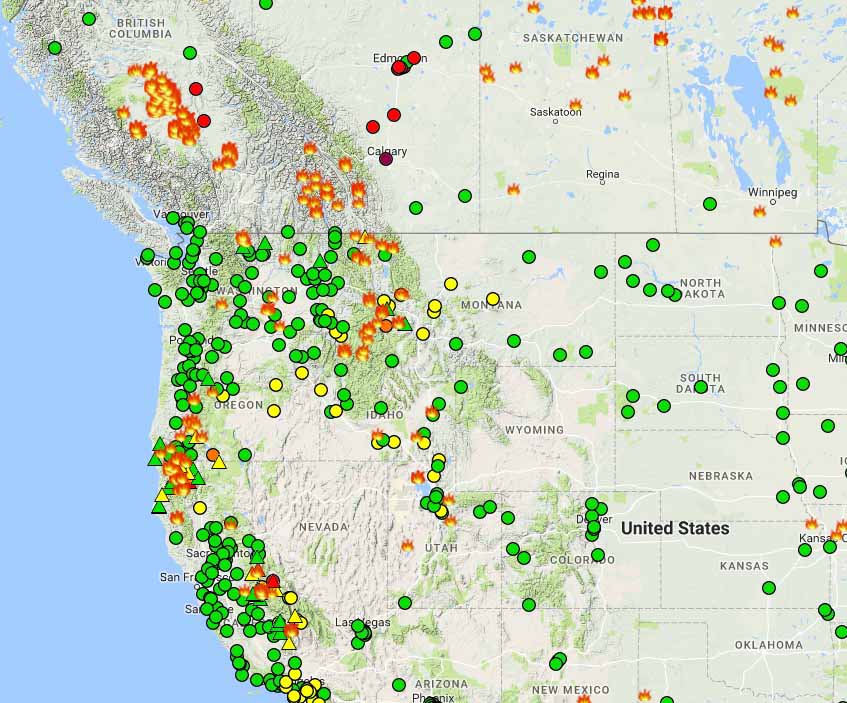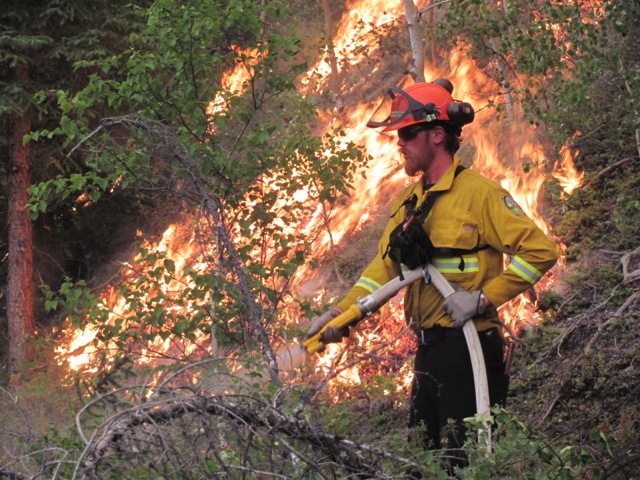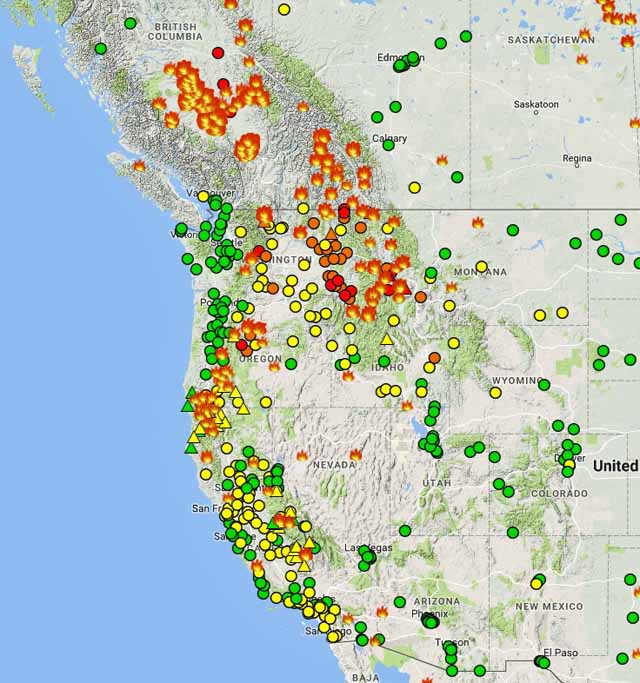Above: The forecast for the maximum levels of wildfire particulate matter (PM 2.5) for August 14, 2017. Experimental product by U.S. Forest Service/BlueSky.
(Originally published at 10:40 a.m. MDT August 14, 2017)
These maps are experimental products developed by U.S. Forest Service researchers using the BlueSky modeling framework, in this case to predict the distribution of very small particulate matter (PM2.5) produced by vegetation fires. Their efforts link a variety of independent models of fire information, fuel loading, fire consumption, fire emissions, and smoke dispersion.
The map above is for Monday, August 14 and the one below is for Tuesday, August 15.

Here is information from the EPA about particulate matter:
Particulate matter contains microscopic solids or liquid droplets that are so small that they can be inhaled and cause serious health problems. Particles less than 10 micrometers in diameter [PM10] pose the greatest problems, because they can get deep into your lungs, and some may even get into your bloodstream.
Fine particles (PM2.5) are the main cause of reduced visibility (haze) in parts of the United States, including many of our treasured national parks and wilderness areas. They can only be seen with an electron microscope. Fine particles are produced from all types of combustion, including motor vehicles, power plants, residential wood burning, forest fires, agricultural burning, and some industrial processes.










